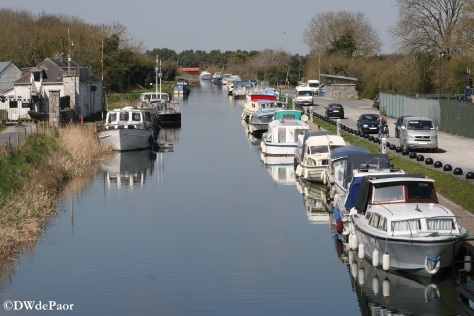
I paid a short visit to Lowtown on the Grand Canal near Robertstown Co. Kildare. It is here that the Barrow Line junctions off the Main Canal Line, and a place I remember from when (many years ago) an uncle and aunt of mine used to “bring the boat” up to Lowtown. The marina has been significantly upgraded since those days however, with marina type board-walks along the side the canal, a toilet block, and it would appear that Waterways Ireland work to redevelop the moorings and amenities at Lowtown is continuing.
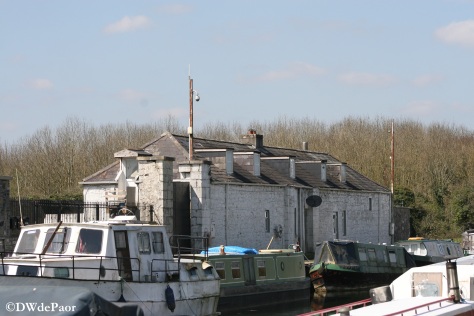
I understand that construction of the Grand Canal commenced circa 1756, and that the Grand Canal was completed in the early 1800’s. The Robertstown Canal Hotel (built circa 18011) was originally planned to be built at Lowtown. Fenton Bridge which crosses the canal at Lowtown was built in 1799 towards the end of the Canal building project.

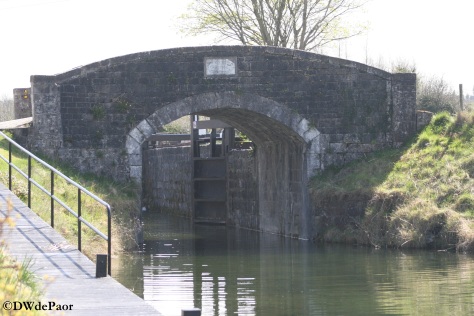
Lowtown is the point where the Dublin Line, Shannon Line and Barrow Line of the Grand Canal meet at Lock 19. From about 1865 wooden barges drawn by horses along a tow path from Dublin to Lowtown, further movement along the canal to Shannon Harbour was effected by a mix of horse-drawn and steam tugs. In 1925 the Grand Canal Company commenced fitting engines to older barges, and all new barges were motorised. 2
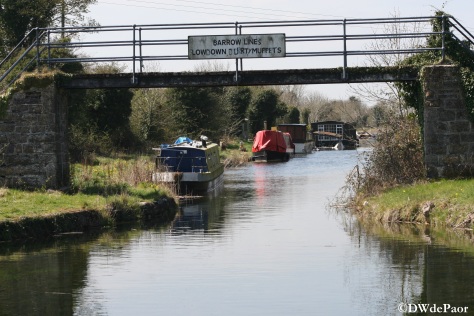
When commercial traffic ceased in the 1960’s, the canals commenced use for recreational boating. There are no lockkeepers assisting boats on the Grand Canal nowadays, lock keeping was almost a “family” business with generations of sons taking over the job from their fathers.
On the day I visited the water was almost crystal clear, and there was an abundance of fish swimming around, along with Mallard ducks splashing about on the surface.
The 52M
During my visit I noticed while there are many boats of varying sizes which appeared well maintained and ready for use (or indeed being used), there were however a number of boats in what one can only describe as in semi-derelict condition. To my mind the saddest of these was the 52M tied up just as one approaches the marina.

The 52M – named The Eustace was originally constructed in riveted steel for the Grand Canal Company by Vickers (Ireland) Ltd. in 1928. Its length is 18.75 Mts. (61′ 6″), its beam 4.01 Mts. (13′ 2″), and its draft 1.36 Mts. (4′ 5.5″). The barge was once used by CIE to transport goods (including maize, porter etc.), later it became the property of Roadstone and they used her for a few years as a sand and gravel boat on the river Suir. Later on in the 1970’s and 1980’s the Robertstown Muintir na Tíre had her converted and she was used for passenger tours. It has had a number of owners since, and now lies derelict on the banks of the canal. 3
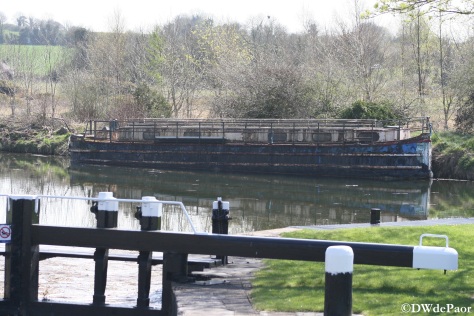
Lock 19
The OED4 defines a Lock as “A short section of a canal or river with gates and sluices at each end which can be opened or closed to change the water level, used for raising and lowering boats”
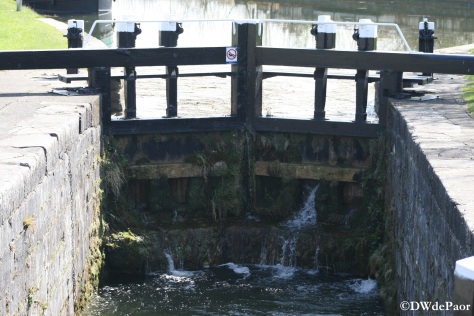
The lock facilitates raising (or lowering) a boat from one water level to another by filling or emptying a chamber between the gates. Locks are used to make the canal more easily navigable and two pairs of watertight wooden (or in some cases steel) gates are used to control the height of the water. The boat which would be positioned between the gates rises or falls with the water level in the area between the two gates, when the water height has equalised to the direction of travel, the gate to the front of the boat is opened and the boat moves out of the Lock and onward to the next Lock.


1 National Inventory of Architectural Heritage
2 Inland Waterways Association of Ireland
4 Oxford English Dictionary – Lock
Photos ©DWdePaor












